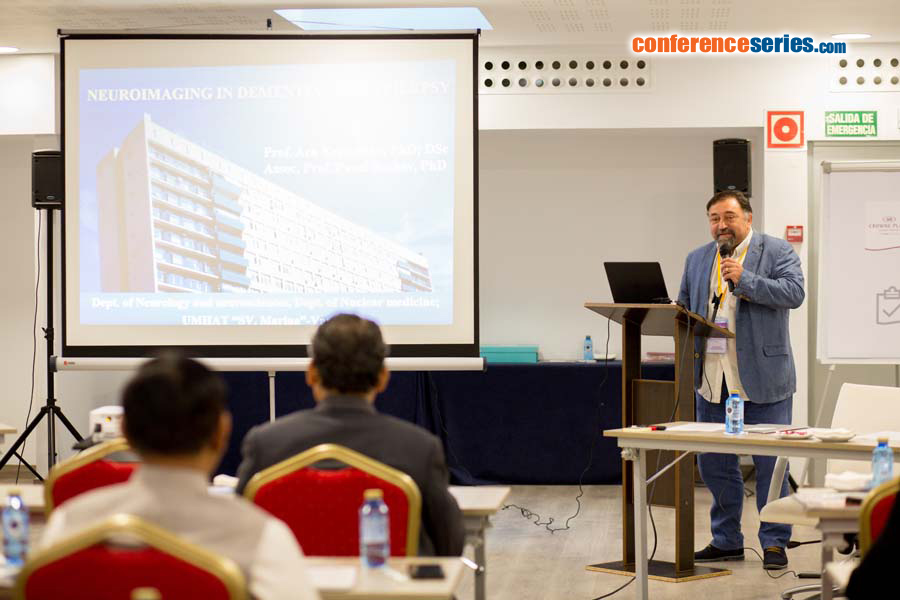
Ara Garabed Kaprelyan
Medical University of Varna, Bulgaria
Title: (18F)-FDG PET in diagnosis of dementias and epilepsy
Biography
Biography: Ara Garabed Kaprelyan
Abstract
Background: Recent epidemiological studies reveal increasing incidence and prevalence of patients with dementia and epilepsy. Nuclear imaging techniques are modern non-invasive tools for investigation in vivo of the basic CNS biochemical processes and physiological functions. Positron emission tomography (PET) provides information about cerebral blood fl ow (CBF), permeability of blood-brain barrier (BBB), cerebral enzyme activity, as well as glucose, amino acids, and neurotransmitters metabolism. Accordingly, it is among the most useful biomarkers for evaluation of neurodegeneration in dementia. (18F)-FDG PET may uncover the disease underlying mechanisms, follow-up the progression, and predict the outcome. Also, interictal PET is used to detect the seizure onset zone and determine the lateralization of temporal lobe epilepsy, when a good concordance between MRI and EEG is missing.
Objective: To study the (18F)-FDG PET fi ndings in patients with dementias and epilepsy.
Methods: Patients with diff erent clinical forms of dementia, genetic and structural epilepsy, due to congenital or acquired brain lesions were included in the study. Detailed clinical examination, MRI and (18F)-FDG PET (Philips Gemini TF PET/CT) were performed.
Results: Decreased glucose metabolism, predominantly in the temporal and parietal regions was found in patients with Alzheimer’s
disease. Th e degree of hypometabolic disturbances correlated with the severity of the disease. In patients with diff use Lewy body
disease (18F)-FDG PET revealed metabolic changes similar to the AD abnormalities and additional hypometabolism in the regions
of visual cortex. In patients with FTD zones of hypometabolism in frontal and temporal lobes were illustrated. Multiple foci of hypometabolism, corresponding to the disturbances of cerebral blood fl ow were shown on scans of patients with vascular dementia.
Interictal (18F)-FDG PET demonstrated well-defi ned hypometabolic zones in accordance with the location of epileptic foci.
Conclusion: Based on our own notices, we suggest that (18F)-FDG PET is a useful eff ective method for early detection and precise
diagnosis of dementias epilepsy.




